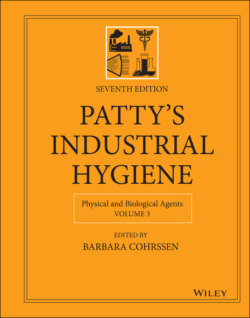Читать книгу Patty's Industrial Hygiene, Physical and Biological Agents - Группа авторов - Страница 65
14 CONCLUSIONS
ОглавлениеIonizing radiation and radioisotopes are used safely today in industry, science, and medicine because of the vast amount of knowledge about radiation physics and biology that has been gained since the discovery about a century ago. Occupationally and medically exposed populations have been observed: 270 000 survivors of the nuclear bombings in Japan,2 those who had been exposed to fallout from nuclear weapons tests and from nuclear reactor accidents in England in 1956 and Chernobyl in 1986 (there was no exposure to the public during the Three Mile Island accident), and populations living in environments with high levels of naturally occurring radiation. Investigations into effects of radiation from the Fukushima accident in 2011 are ongoing. The following statements have been made by UNSCEAR (2013)3 and reaffirmed by UNSCEAR (2015)4 regarding the Fukushima accident:
1 “No radiation‐related deaths or acute diseases have been observed among the workers and general public exposed to radiation from the accident.”
2 “No discernible increased incidence of radiation‐related health effects are expected among exposed members of the public or their descendants.”
3 “The most important health effect is on mental and social well‐being, related to the enormous impact of the earthquake, tsunami and nuclear accident, and the fear and stigma related to the perceived risk of exposure to ionizing radiation.”
4 “Exposures of both marine and terrestrial non‐human biota following the accident were, in general, too low for acute effects to be observed, though there may have been some exceptions because of local variability…”
More is known about radiation bioeffects than is known for most other environmental stressing agents. Coincident with the expansion of knowledge about radiation bioeffects was the development of sensitive radiation measuring instruments that enabled us to accurately measure radiation fields and quantities of radioactive materials at a level far below that at which harmful radiation effects are seen. This vast amount of dose–response data enables health physicists and industrial hygienists to control the radiation environment in the workplace so that no harmful radiation effects are seen. Thus, medical, scientific, and industrial applications of radiation technology continue at levels of risk no greater than, and often less than, those associated with other applications of science and technology that are generally considered by society to be safe.
